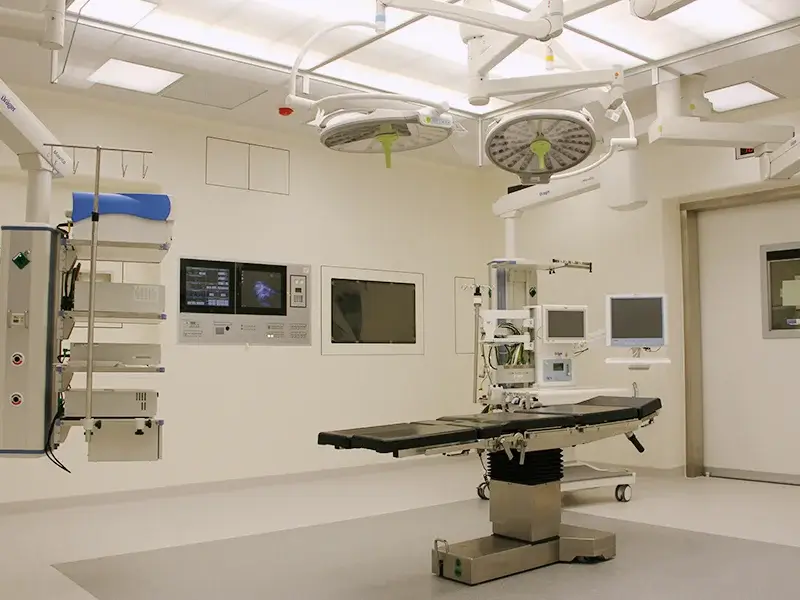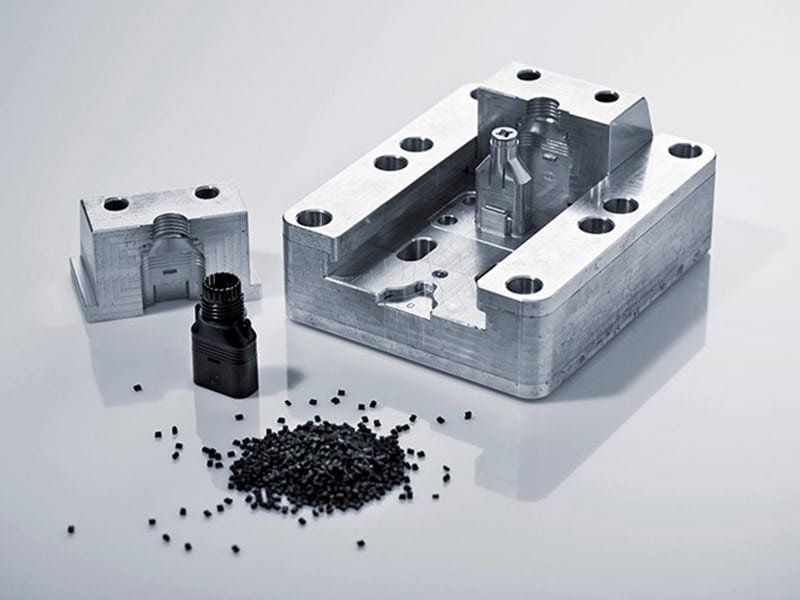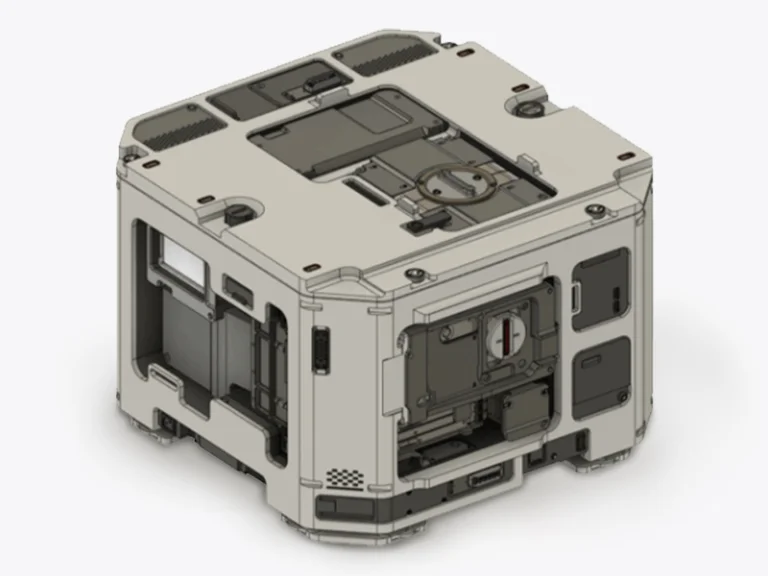The success of injection molding process hinges on the mould parts and functions, each meticulously designed to ensure consistent quality, efficiency, and durability. This article dives into the types of injection mold components, their roles, design considerations, and their profound impact on injection moulded plastic components. By understanding these plastic mold components, manufacturers can enhance product quality, streamline development, reduce costs, and extend mold lifespan.
Core Components of an Injection Mold
The heart of any injection mold lies in its core molding components, which work together to shape and produce plastic mold parts. Let’s explore the primary parts and their functions.
Mold Base
The mold base serves as the structural backbone, holding all mould parts in precise alignment. It withstands the intense clamping forces during injection, ensuring stability.
A well-designed mold base prevents defects like flash or misalignment, directly contributing to the quality of injection moulded parts. Its robust construction is critical for high-volume production, where consistency is paramount.
Mold Cavity and Core
The mold cavity and core are the plastic mold components that define the shape of the final part. The cavity forms the external surface, while the core shapes internal features, such as holes or recesses.
These components require high-precision machining to achieve tight tolerances, ensuring injection moulded plastic components meet exact specifications. Their accuracy determines dimensional precision and surface finish, making them pivotal for quality.
Sprue, Runners, and Gates
The delivery system for molten plastic consists of the sprue bushing, runners, and gates. The sprue bushing is the main channel connecting the injection machine’s nozzle to the mold, guiding plastic into the system. Runners distribute the material to multiple cavities, while gates control its entry, ensuring uniform flow.
Optimized design of these mould parts minimizes defects like short shots or weld lines, enhancing the consistency of plastic mold parts. Thoughtful runner and gate sizing also reduces material waste and cycle time.
Ejector System
The ejector system removes solidified parts from the mold without damage. Types of ejector in mould include pins, sleeves, and plates, each chosen based on part geometry. For example, ejector pins are common for flat surfaces, while sleeves suit cylindrical features.
Proper placement prevents surface marks or deformation, preserving the quality of injection moulded plastic components. Maintenance-friendly designs, like easily replaceable pins, reduce downtime and upkeep costs.
Cooling System
The cooling system regulates mold temperature through channels that circulate coolant, typically water. Uniform cooling is essential to prevent warping, shrinkage, or internal stresses in plastic mold parts.
Optimized channel layouts shorten cycle times and improve part strength, making this system a key factor in both efficiency and quality.
Venting System
Venting allows trapped air and gases to escape during injection, preventing defects like burns, voids, or incomplete filling. Small vents, typically 0.01–0.05 mm, are strategically placed to avoid flash. Effective venting ensures injection moulded parts are free of imperfections, maintaining high standards.
Guide Pins and Bushings
Guide pins and bushings maintain precise alignment between mold halves during opening and closing. This precision prevents misalignment, ensuring consistent dimensions in injection moulded parts. Their durability is crucial for long-term performance.
Advanced Injection Mold Components for Complex Designs
For intricate injection moulded parts with complex geometries, advanced mould parts are essential. These components enable the production of plastic molded parts with complex features.
Sliders and Lifters
Sliders and lifters address complex part features like undercuts or side details. Sliders move laterally to release side features, while lifters (also called angle pins) handle internal undercuts during ejection.
These molding components ensure smooth demolding without damaging delicate injection moulded plastic components, making them indispensable for intricate designs.
Hot Runner System
A hot runner system keeps plastic molten within the mold, eliminating the need for solidified runners. This reduces material waste and cycle times, improving efficiency for high-volume production of plastic mold parts. Hot runners also enhance part quality by ensuring consistent flow and minimizing defects like weld lines.
Interlocks
Interlocks, or anti-misalignment features, ensure precise alignment between mold halves, especially in complex molds with multiple moving parts. By preventing misalignment, interlocks maintain dimensional accuracy and reduce wear on mould parts, contributing to the longevity and quality of injection moulded parts.
Support Pillars
Support pillars provide additional structural reinforcement in molds for complex or large plastic mold components. They prevent deflection under high clamping forces, ensuring stability and consistent part quality, particularly in multi-cavity or high-pressure applications.
Design and Material Considerations for Injection Mold Components
The design and material choices for injection mould parts significantly influence performance, quality, and cost. Here’s how these factors come into play.
Processing Accuracy
Components like cavities and cores demand tight tolerances, achieved through techniques like CNC machining, EDM, or polishing. High processing accuracy ensures injection moulded plastic components meet exact specifications, minimizing defects and rework.
Cooling Channel Layout Optimization
Cooling channels are strategically placed close to high-heat areas, following part contours to ensure uniform temperature control. This layout reduces cycle times, prevents defects like warping, and enhances the strength of injection moulded parts, making it a critical design focus.
Designing Gates, Draft Angles, and Parting Lines
The design of gates and runners, draft angles, and parting lines significantly affects the quality and efficiency of injection moulded parts. The gates typical placed near thicker sections or non-visible areas to reduce marks and ensure even flow. The runner should be short and rounded paths to multiple cavities for balanced filling. Draft angles should be tailored to material and part shape to make shure smooth demolding. The typically draft angle is 0.5°–5°. Parting lines should avoid visible surfaces to reduce marks or flash, with sliders or interlocks ensuring alignment in complex molds.
Material Selection
Molding components are typically made from hardened steel, pre-hardened steel, or aluminum, chosen for durability, wear resistance, and thermal conductivity. Material choice also balances cost and performance. In the below table, we briefly overview the material selection for different injection mold parts.
| Component | Suitable Materials | Considerations |
|---|---|---|
| Mold Base | S50C Steel, P20 Steel, Aluminum (7075) | S50C for cost-effective molds, P20 for durability, aluminum for prototypes. |
| Cavity and Core | Hardened Steel (H13, 420SS), P20 Steel | Hardened steel for high precision and wear resistance. |
| Sprue Bushing | Hardened Steel (H13, D2) | Durable materials resist thermal stress and abrasion. |
| Gates and Runners | Hardened Steel (H13), P20 Steel | Polished steel ensures smooth flow and minimizes wear. |
| Ejector System | Hardened Steel (SKD61, H13), S7 Steel | Types of ejector in mould require wear-resistant materials for longevity. |
| Cooling Channels | Stainless Steel, Copper Alloys (BeCu) | Copper alloys enhance thermal conductivity for efficient cooling. |
| Guide Pins/Bushings | Hardened Steel (H13, SKD11) | High-strength materials resist wear during repeated mold cycles. |
| Support Pillars | P20 Steel, S50C Steel | Strong materials prevent deflection under pressure. |
| Sliders and Lifters | Hardened Steel (H13, D2) | Durable and wear-resistant materials ensure smooth movement and longevity. |
| Interlocks | Hardened Steel (D2, SKD11) | Precision-machined, durable materials ensure tight alignment. |
Injection Mold Lifespan and Maintenance
A injeciton mold’s lifespan, typically ranging from 100,000 to over 1 million cycles, depends on its design, material quality, and maintenance, directly impacting the cost-effectiveness of producing plastic mold parts. High-quality mould parts and regular upkeep extend durability, with wear commonly occurring in gates, ejector systems, and cavity surfaces due to abrasion or thermal stress. Daily maintenance, including cleaning plastic residues, lubricating moving parts, and inspecting cooling channels, ensures reliable performance of molding components. Signs of failure, such as flash, sticking parts, or inconsistent cycle times, require prompt action like adjusting clamping force or replacing worn mould parts to prevent downtime and defective injection moulded parts.
Why Understanding Injection Mold Components Matters
The design and condition of mould parts directly influence the quality of injection moulded plastic components. Well-designed runners, gates, and cooling systems promote consistency, and effective ejector and venting systems prevent defects like voids or burns. A deep understanding of types of injection mold components unlocks significant benefits for manufacturers:
- Improved Product Quality: Optimized mould parts deliver precise, consistent, and defect-free injection moulded parts.
- Shorter Development Cycles: Well-designed molds reduce testing and iteration time, speeding up production.
- Cost Reduction: Efficient designs and proactive maintenance minimize waste and downtime, lowering costs for plastic mold components.
- Extended Mold Lifespan: Depend on different injection mold components choose the suitable aterial and right care maximize the durability of mould parts.
Conclusion
The mould parts and functions in an injection mold are the backbone of high-quality, efficient production. From the mold base to advanced components like sliders, hot runners, and interlocks, each part plays a critical role in shaping injection moulded plastic components. By prioritizing thoughtful design, high-quality materials, and proactive maintenance, manufacturers can achieve precise, consistent parts while minimizing costs and extending mold life. Jiangzhi is a on demand manufactring company providing one-stop injection molding service. Cooperate with our experienced team, optimizing the design and strict quality control, we ensure meet the needs of your injection molding project.
FAQ About Injection Mold Components
How is an injection mold made?
Injection molds are made through a process of design, precision machining, assembly, and testing. The mold is tailored to match the exact specifications of your product, ensuring high-quality and efficient production.
How often should mold components be maintained?
Mold components should be maintained based on usage. For high-volume molds, maintenance is recommended every 50,000–100,000 shots. For lower-volume molds, maintenance should occur every 10,000–20,000 shots or 1–3 months, whichever comes first.
Can mold components be reused for different products?
Standard mold components, such as guide pins and screws, can usually be reused across different molds. However, custom components like cavities and cores are typically designed for specific products and are not interchangeable.



